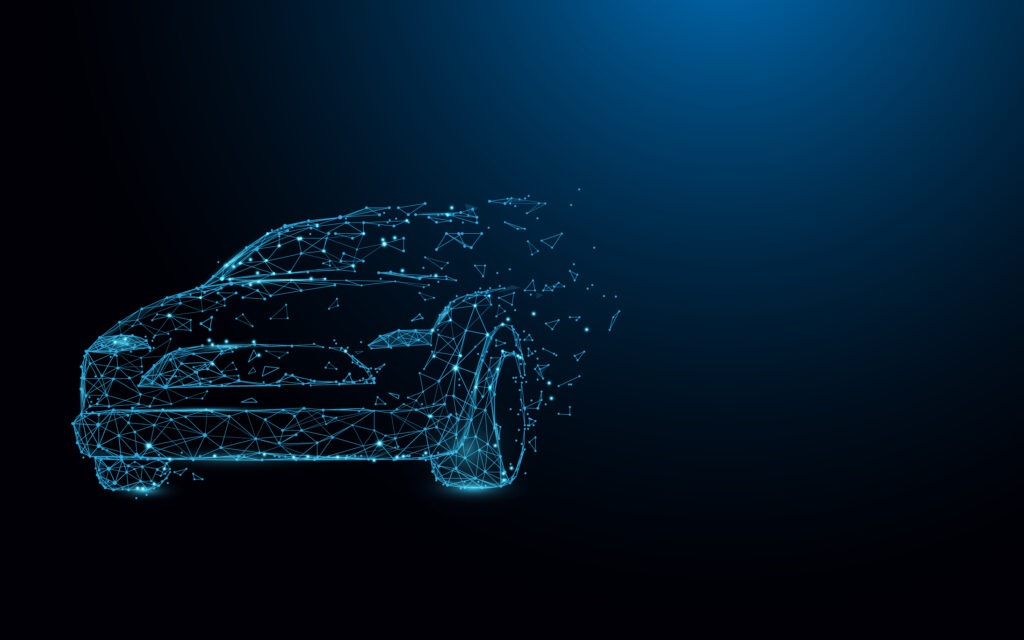14 January 2025

With a long list of automotive suppliers making the trip to CES, what major announcements were made in Las Vegas? Tom Hooker, Autovista24 journalist, reviews the event.
There was a noticeable lack of carmakers at this year’s CES. However, there was no shortage of suppliers in attendance. These companies unveiled the latest advancements in software-defined vehicles (SDVs), in-cabin user experience, AI, and safety solutions.
Multiple collaborations were also announced as carmakers and technology companies found more common ground in SDVs. Blackberry, Amazon Web Services (AWS), Snapdragon, and Qualcomm all look set to increase their automotive presence.
AI in-cabin experience
LG was one of the first companies to host a press conference at this year’s CES. The brand focused on its ‘Affectionate Intelligence’ approach. This AI is designed to better understand and empathize with customers while delivering a more personalized experience.
This theme was apparent in its AI-based in-cabin sensing solution, the AI in-vehicle experience. The concept is designed to make driving safer and more convenient. It leverages LG’s Vision AI to detect and respond to occupants’ needs while optimizing cabin conditions.
The solution adapts to each driver’s preferences and provides tailored services. This includes personalized driving routes, real-time updates on road conditions, and information on nearby infrastructure as well as points of interest.
LG’s demonstrated these capabilities during its press conference. The system proactively suggests rerouting to avoid an accident. It also recommended holding a video conference inside the vehicle due to traffic delays.
‘With LG’s Affectionate Intelligence technology, LG’s in-cabin solution provides automakers with performance, quality, and flexibility, while providing drivers and passengers with a safer and more enjoyable on-road experience,’ said Seokhyun.
Important automotive partnerships
This solution is made possible by analyzing the driver and the vehicle’s interior. This is carried out using two systems, the driver monitoring system (DMS) and the driver and interior monitoring system (DIMS).
The former was developed with semiconductor AI company Ambarella, using its CV25 AI system-on-chip. DMS can detect a user’s physical health and emotional state with heart rate monitoring and facial expression recognition. It can notify the driver if they become distracted or drowsy while alerting them to their overall well-being.
‘Our collaboration with Ambarella represents a major step forward in the use of AI-driven technology to advance vehicle safety,’ stated president of LG vehicle solution company, Eun Seokhyun.
The company is also working with Qualcomm on a cross-domain controller platform for vehicles. This incorporates LG’s in-vehicle infotainment system and advanced driver-assistance system (ADAS) into a single controller.
A personalized cabin at CES
Garmin presented its highly personalized Unified Cabin 2025. The system boasts an ultra-wide front display, with a total of six screens and four seats in the interior concept.
Generative AI supports theme customization based on user inputs and a personalized voice assistant is available for each seat. Using ultra-wideband technology, the system can detect if seats are occupied by adults or children based on breathing patterns. There are also customizable cabin lighting and unique audio streams. These features are all run from a single Garmin control module.
‘Garmin Unified Cabin has resonated strongly with global automakers because there is nothing else like it on the market today. This scalable solution can be customized to meet the needs of premium and mainline brands and includes a growing number of cabin electronics running off a single system on chip,’ explained executive vice president and managing director for Garmin Automotive OEM, Matt Munn.
The Unified Cabin 2025 is powered by Qualcomm Technologies’ Snapdragon cockpit elite platform, enabling an SDV architecture.
‘This next-generation digital cockpit solution offers automakers unparalleled entertainment and personalization for their vehicles, setting a new standard for software-defined vehicle architecture,’ commented group general manager, automotive, industrial and cloud, Qualcomm Technologies, Nakul Duggal.
Multitude of collaborations
LG and Garmin were just two of Qualcomm’s automotive collaborations announced at CES. The company is currently working with Leapmotor, Mahindra, Hyundai Mobis, Alps Alpine, and Royal Enfield. Using Snapdragon Digital Chassis, Qualcomm is developing in-cabin solutions and ADAS features in these partnerships.
Desay and Panasonic Automotive are also collaborating with the company using the Snapdragon elite-tier platform. Qualcomm and Amazon intend to work together on accelerating the integration of advanced AI technologies in vehicles.
This will allow carmakers, developers, and suppliers to deliver innovative and advanced in-car experiences while reducing development time and costs. This could include features such as Alexa.
‘As we continue to work with automakers to redefine automotive experiences that delight drivers and passengers, whether it’s through Alexa or our content services like Audible and Amazon Music, it made sense to collaborate with a company renowned for building advanced automotive chipset platforms,’ said Amazon smart vehicles vice president, Anes Hodzic.
The two companies intend to optimize large language model-powered experiences in the car while also leveraging the AWS cloud.
Manufacturers are constantly looking for ways to enhance the development of Snapdragon automotive chipsets. One solution that aims to provide them with a virtual development environment for these chipsets is making waves in the industry.
At the recent CES event, VinAI showcased six innovative technologies designed to improve road safety and enhance the driving experience. One standout feature was the world’s first passive drunk-driving detection system called DrunkSense. This system uses a combination of facial behavior tracking, vehicle control monitoring, and air alcohol sensors to detect if a driver is impaired without the need for a breathalyzer.
Another impressive technology from VinAI is InteriorSense, a driver and occupant monitoring system that analyzes behavior patterns and alerts the driver if they become distracted. MirrorSense, on the other hand, is the first automatic mirror adjustment feature that enhances visibility and safety inside the cabin.
Jelly View, another offering from VinAI, provides drivers with a transparent view of their surroundings through the vehicle, allowing them to assess road conditions and avoid potential accidents.
Bosch also shared its vision for the future at CES, highlighting the role of AI in its upcoming projects. With a team of nearly 5,000 AI specialists working on intelligent solutions and over 1,500 AI patents registered in the last five years, Bosch is committed to developing cutting-edge technology for the automotive industry. One of their innovations includes a system that enables smooth braking without jerking, as well as solutions for centralized architectures that manage interactions between automotive electronics and the cloud seamlessly.
Continental showcased its SDV innovations at CES, focusing on creating safer, more efficient, and customizable driving experiences. Their road-to-cloud ecosystem accelerates the development of vehicle software, with additional features such as cabin sensing, holistic motion control, and smart device-based vehicle access showcased in their Intelligent demo car.
Blackberry also made waves at CES by rebranding its ‘Blackberry IoT’ division to QNX and launching innovative solutions for the automotive industry. QNX Cabin, for example, is a framework that allows carmakers to virtualize the development of digital cockpits in the cloud, streamlining processes and improving time-to-market.
In collaboration with Microsoft, QNX aims to make cloud-based software development easier for manufacturers, accelerating the development of software-defined vehicles. Additionally, partnerships with Vector and TTTech will further enhance the development of a foundational vehicle software platform to drive auto innovation.
Overall, CES showcased the latest advancements in automotive technology, from safety solutions to AI-driven systems, paving the way for a smarter and more connected future on the roads. Manufacturers now have access to a range of cutting-edge technologies to enhance development processes and improve the driving experience for consumers. The field of artificial intelligence (AI) has been rapidly advancing in recent years, with new breakthroughs and applications emerging on a regular basis. One area where AI has made significant strides is in the field of robotics, where intelligent machines are being developed to perform a wide range of tasks, from simple household chores to complex surgical procedures.
One of the most exciting developments in the field of AI robotics is the creation of autonomous robots, which are able to operate independently without human intervention. These robots are equipped with sophisticated sensors and algorithms that allow them to navigate their environment, make decisions, and adapt to changing conditions. Autonomous robots have the potential to revolutionize a wide range of industries, from manufacturing and logistics to healthcare and agriculture.
Another area where AI robotics is making a big impact is in the field of healthcare. Robots are being developed to assist doctors and nurses in a variety of tasks, from conducting surgeries to delivering medication to patients. These robots are able to perform tasks with a high degree of precision and accuracy, reducing the risk of human error and improving patient outcomes.
In the field of agriculture, AI robots are being used to automate tasks such as planting, watering, and harvesting crops. These robots are equipped with sensors that allow them to monitor soil conditions, detect pests and diseases, and optimize the use of resources such as water and fertilizer. By automating these tasks, AI robots are helping farmers to increase their efficiency and productivity, while also reducing the environmental impact of agriculture.
AI robotics is also being used in the field of education, where robots are being developed to assist teachers in the classroom. These robots are able to engage with students, answer questions, and provide personalized feedback and support. By freeing up teachers to focus on more complex tasks, AI robots are helping to improve the quality of education and ensure that every student receives the support they need to succeed.
Overall, AI robotics has the potential to revolutionize a wide range of industries and improve our quality of life in countless ways. As the field continues to advance, we can expect to see even more exciting developments in the coming years, with robots becoming increasingly intelligent, versatile, and ubiquitous in our daily lives.







